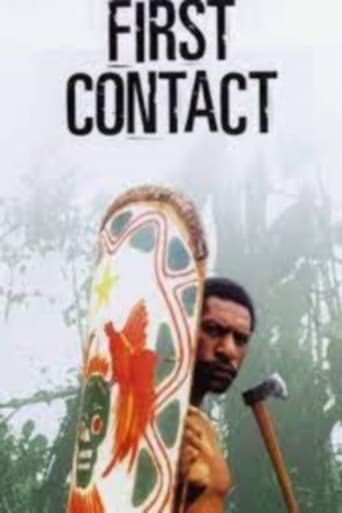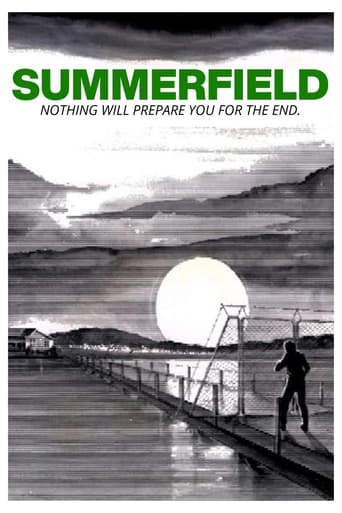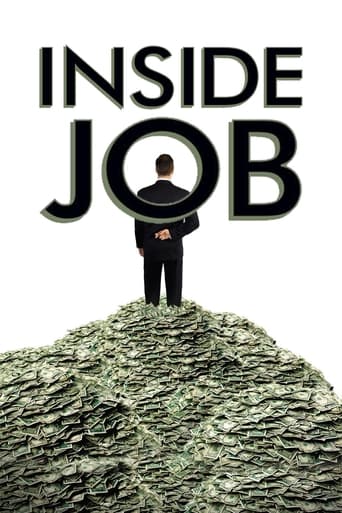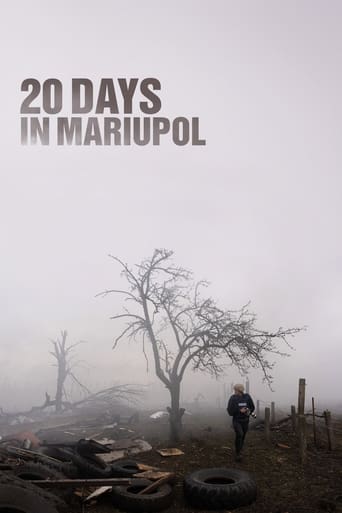Best movies like First Contact
A unique, carefully handpicked, selection of the best movies like First Contact Starring Michael Leahy, Daniel Leahy, James Leahy, and more. If you liked First Contact then you may also like: Untouchable, Walk Into Paradise, What's Cookin' Doc?, With Babies and Banners: Story of the Women's Emergency Brigade, The Naked Eye and many more popular movies featured on this list. You can further filter the list even more or get a random selection from the list of similar movies, to make your selection even easier.
First Contact is a 1983 documentary by Bob Connolly and Robin Anderson which recounts the discovery of a flourishing native population in the interior highlands of New Guinea in 1930 in what had been thought to be an uninhabited area. It is based on the book of the same name by the same authors. Inhabitants of the region and surviving members of the Leahy brothers' gold prospecting party recount their astonishment at this unforeseen meeting. The film includes still photographs taken by a member of the expedition and contemporary footage of the island's terrain. It was nominated for an Academy Award for Best Documentary Feature.
You may filter the list of movies on this page for a more refined, personalized selection of movies.
Still not sure what to watch click the recommend buttun below to get a movie recommendation selected from all the movies on this list
Walk Into Paradise
Steve McAllister, an Australian official for The New Guinea Administration, gets orders to investigate an oil discovery by Ned 'Shark-Eye' Kelly in the interior. He selects his native policeman, Sergeant-Major Towalaka, to accompany him on his "walk into hell" and then finds that a French lady doctor, Louise Dumurcet, is to go with them part of the journey. They find the malaria-stricken Jeff Clayton in a deserted village and he joins the trek. They are captured by jungle-natives but are released after Dr. Dumurcet cures the fever-stricken children of the chief.
What's Cookin' Doc?
At the Academy Awards ceremony, Bugs Bunny tries to convince the audience that he deserves the Oscar. Opens with live action scenes of Hollywood.
With Babies and Banners: Story of the Women's Emergency Brigade
With Babies and Banners: Story of the Women's Emergency Brigade is a 1979 documentary film directed by Lorraine Gray about the General Motors sit-down strike in 1936–1937 that focuses uniquely on the role of women using archival footage and interviews. It provides an inside look at women's roles in the strike. The film was one of the first to put together archival footage with contemporary interviews of participants and helped spur a series of films on left and labor history in the US utilizing this technique. The film was also important in helping bring into view the history of American women being active in the public sphere, particularly in union and labor actions. The film was, further, ground breaking because it was produced and directed by women. It was nominated for an Academy Award for Best Documentary Feature.
The Naked Eye
The Naked Eye is a 1956 American documentary film about the history of photography directed by Louis Clyde Stoumen. It was nominated for an Academy Award for Best Documentary Feature.
Rats in the Ranks
Every September Sydney's inner-suburban Leichhardt Council re-elects it mayor. Incumbent Larry Hand was popular with the citizenry but they don't vote for mayor - the 12 councillors do - and after three years of Larry, at least four councillors were after his job. When film-makers Bob Connolly and Robin Anderson settled in at Leichhardt Council in early 1994 the knives were already being sharpened. A battle royal was in the making, and so it came to pass. By the end of September Larry had fought the fight of his life, with Connolly and Anderson documenting every bit of it on film. Ambition, courage, envy, hatred, loyalty, betrayal, disaster, triumph... in other words, a classic study in politics.
Journey Into Spring
Journey into Spring is a 1958 British short documentary film directed by Ralph Keene, and made by British Transport Films. The film -- partly a tribute to the work of the pioneering naturalist and ornithologist Gilbert White (1720-1793), author of The Natural History of Selborne -- features a commentary by the poet Laurie Lee, and camerawork by the wildlife cinematographer Patrick Carey. The journey suggested by the title is through time rather than space. In fact, two such journeys are made: the first back to the eighteenth century to pay tribute to the work of White, and the second studies the changing natural landscape near White's home town of Selborne in Hampshire between a typical March and May. It was nominated for two Academy Awards -- one for Best Documentary Short, and the other for Best Live Action Short.
Kenji Comes Home
Kenji Comes Home is a 1949 documentary film produced by Paul F. Heard. Written and directed by Charles F. Schwep, it was filmed on location in Japan and employed native actors. The film is the story of Kenji, a repatriated prisoner of war in Japan, and his difficulties in settling down. He is torn between the glowing promises of communism and ideals of his girlfriend Aki's Christian religion. The film was nominated for an Academy Award for Best Documentary Feature.
A King's Story
A King's Story is a 1965 British documentary film directed by Harry Booth about the life of King Edward VIII, from his birth until abdication in 1936. It was nominated for an Academy Award for Best Documentary Feature.
Krippendorf's Tribe
After squandering his grant money, despondent and recently widowed anthropologist James Krippendorf must produce hard evidence of the existence of a heretofore undiscovered New Guinea tribe. Grass skirts, makeup, and staged rituals transform his three troubled children into the Shelmikedmu, a primitive culture whose habits enthrall scholars. But when a spiteful rival threatens to blow the whistle on Krippendorf's ruse, he gets into the act as well.
Brothers
Bob Naughton and Eddie Connolly are identical-twin brothers that were separated in infancy. Bob is raised by a rich lawyer, has all the advantages, but is a drunk with no moral character. Eddie is a pianist in a speak-easy but a man of high character. Bob commits a murder and Eddie is blamed and faces life in prison.
Cannibal Tours
The film follows a number of European and American ecotourists as they travel from village to village throughout the Sepik River area in Papua New Guinea, driving hard bargains for local handcrafted items, paying to view formerly sacred ceremonies and taking photographs of every aspect of "primitive" life. With some prodding, the tourists unwittingly reveal an unattractive and pervasive ethnocentrism to O'Rourke's cameras. The tourists thus become somewhat dehumanized by the camera, even as the tourists themselves are busy exoticizing even the most mundane aspects of Sepik River life.
The Challenge... A Tribute to Modern Art
The Challenge... A Tribute to Modern Art is a 1974 American documentary film directed by Herbert Kline. The film shows footage of great modern artists in their studios creating and commenting on their work, with narration and commentary by Orson Welles. It was nominated for an Academy Award for Best Documentary Feature.
Dawson City: Frozen Time
The true history of a collection of some 500 films dating from 1910s to 1920s, which were lost for over 50 years until being discovered buried in a sub-arctic swimming pool deep in the Yukon Territory, in Dawson City, located about 350 miles south of the Arctic Circle.
Dead Birds
The film's title is borrowed from a Dani fable that Gardner recounts in voice-over. The Dani people, whom Gardner identifies mysteriously as "a mountain people," believe that there was once a great race between a bird and a snake, which was to determine the lives of human beings. Should men shed their skins and live forever like snakes, or die like birds? The bird won the race, dictating that man must die. The film's plot revolves around two characters, Weyak and Pua. Weyak is a warrior who guards the frontier between the land of his tribe and that of the neighboring tribe. Pua is a young boy whom Gardner depicts as weak and inept.
The Endurance: Shackleton's Legendary Antarctic Expedition
Documentary on the Shackleton Antartic expedition. A retelling of Sir Ernest Shackleton's ill-fated expedition to Antarctica in and the crew of his vessel 'The Endurance', which was trapped in the ice floes and frigid open ocean of the Antarctic in 1914. Shackleton decided, with many of his crew injured and weak from exposure and starvation, to take a team of his fittest men and attempt to find help. Setting out in appalling conditions with hopelessly inadequate equipment, they endured all weather and terrain and finally reached safety. Persuading a local team of his confidence that the abandoned team would still be alive, he set out again to find them. After almost 2 years trapped on the ice, all members of the crew were finally rescued.
Bear Island
A group of people converge on a barren Arctic island. They have their reasons for being there but when a series of mysterious accidents and murders take place, a whole lot of darker motives become apparent. Could the fortune in buried Nazi gold be the key to the mystery? Donald Sutherland and Vanessa Redgrave investigate
The Panama Deception
This winner of the 1993 Academy Award for Best Documentary Feature details the case that the 1989 invasion of Panama by the US was motivated not by the need to protect American soldiers, restore democracy or even capture Noriega. It was to force Panama to submit the will of the United States after Noriega had exhausted his usefulness.
High Schools
High Schools is a 1984 American documentary film produced and directed by Charles Guggenheim. It is based on Ernest L. Boyer's book, High School, and was filmed on location in seven American high schools. The film was nominated for an Academy Award for Best Documentary Feature.
Skullduggery
An expedition into the interior of Papua New Guinea comes across a tribe of ape-like people who may or may not be ancestors of early man.
Summerfield
When teacher Simon arrives in a small, secluded village to take over the local school, he is surprised to discover that his predecessor has disappeared without a trace - and that nobody seems too concerned about it. As Simon probes deeper into the disappearance, the inhabitants of a forbidding estate called "Summerfield" take on more and more significance - until events reach a tragic, shattering and unforeseen climax.
In a Savage Land
Two anthropologists married to each other go to an island off of Papua New Guinea for field research in pre-World War II. Eventually the war breaks out and many lives are disrupted and complicated.
Jamaican Gold
A chance meeting leads two former college friends into a search for sunken treasure, a search which involves them with the double dealing Landers, supporter of their expedition treasures is discovered, but Landers traps them in an underwater cave.
Ghost Town Law
When two of their Marshal friends are killed, the Rough Riders are sent to investigate. They have to find the killers in a ghost town where the houses and an old mine are interconnected by secret passages and tunnels.
Golden Saddles, Silver Spurs
This documentary traces the history of the B-Western from it's silent movie origins to its demise in the early 1950s. The film contains a large number of scenes from early silents and seldom seen films, as well as old photographs of the stars and one-sheet advertisements for lost films.
Tukana - Who Is Responsible?
Tells the story of a university drop out who returns to his village in Buka Passage, Bougainville. He drifts into rootlessness among bad companions, becoming progressively alienated from his parents and village life, with tragic results.
Bob Ross: The Happy Painter
A behind-the-scenes look at the beloved public television personality's journey from humble beginnings to an American pop-culture icon. "The Happy Painter" reveals the public and private sides of Bob Ross through loving accounts from close friends and family, childhood photographs and rare archival footage. Interviewees recount his gentle, mild-mannered demeanor and unwavering dedication to wildlife, and disclose little-known facts about his hair, his fascination with fast cars and more. Film clips feature Bob Ross with mentor William Alexander and the rough-cut of the first "Joy of Painting" episode from 1982. Famous Bob Ross enthusiasts, including talk-show pioneer Phil Donahue, film stars Jane Seymour and Terrence Howard, chef Duff Goldman and country music favorites Brad Paisley and Jerrod Niemann, provide fascinating insights into the man, the artist and his legacy.
The Real Goodfella
The show features Henry Hill, Martin Scorsese (director of Goodfellas), Nicholas Pileggi (writer of Wiseguy and co-writer of Goodfellas), Gus Russo (author of Gangsters and GoodFellas), Marie Jones (Henry Hill's boss), Alfie McNeil (former U.S. Marshal), FBI agent Edward McDonald, and Joe Hill (Henry Hill's brother). It shows surveillance footage of mob capo Paul Vario's crew and photographs of Jimmy Burke and Paul Vario. The programme gives Henry Hill's personal opinion on what happened, as well as the testimonies of eyewitnesses. It also features an excerpt of a 1978 news report on the famed Lufthansa heist and footage of a newspaper column printed at the same time.
A Blank on the Map
In his now well-known role of narrator of wildlife expeditions, Attenborough accompanies a government-sponsored trek into the central New Guinea highlands to make contact with a group of natives never before seen by Europeans.
Jocky Wilson Said
Rare archive footage and Jocky Wilson's own words tell the story of the rise and fall of a cult Scottish sportman. Featuring interviews with his friends and darts contemporaries.
Hangar 10
33 years after the infamous Rendlesham Forest UFO incident, three metal detector enthusiasts hunting for Saxon gold in the same region, capture incredible footage of UFO's whilst filming their expedition. As night falls and with their navigation equipment failing, they find themselves facing a terrifying encounter with an unforgiving alien presence.
Say Goodbye
Say Goodbye is a 1971 American documentary film about the relationship between humans and nature, directed by David H. Vowell. The film depicts the plight of various animal species at the hands of man and his influence. Some segments include the clubbing of seals on the Pribilof Islands, the effect of DDT on brown pelican populations in Texas, and the plight of severely endangered animals. It was nominated for the Academy Award for Best Documentary Feature.
Alaska Wilderness Lake
Alaska Wilderness Lake is a 1971 American documentary film produced by Alan Landsburg. It was nominated for an Academy Award for Best Documentary Feature. The film is based on the book Red Salmon, Brown Bear by Theodore J. Walker.








































Untouchable
The inside story of the rise and fall of Harvey Weinstein reveals how, over decades, he acquired and protected his power even when scandal threatened to engulf him. Former colleagues and accusers detail the method and consequences of his alleged abuse, hoping for justice and also to inspire change.